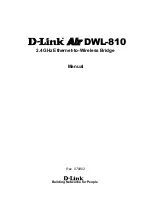
Using AnywhereUSB to Connect USB Devices
6
Supported Devices
AnywhereUSB has been successfully tested and deployed with a wide variety of USB storage,
HID, and printer devices, as well as a number of other more uncommon devices such as
biometric readers or bulk mode cameras.
Known Issues
Devices
AnywhereUSB does not support isochronous USB devices. This includes most audio devices and
some (but not all) streaming video devices. Bulk mode and interrupt devices are supported. This
includes the vast majority of USB devices on the market today. Digi International provides a
compatibility checker you can use to determine whether your device should work properly with
AnywhereUSB:
www.digi.com/support/index.jsp
AnywhereUSB supports USB 1.1 devices and USB 2.0 devices at USB 1.1 speeds. USB 2.0 high
speed performance is not supported.
Operating Systems
AnywhereUSB is supported on most Windows operating systems. It is not supported on Linux or
Unix platforms.
AnywhereUSB and ESX Server Go to Work
Point of sale (POS) system manufacturers can use AnywhereUSB and ESX Server to take the PC
out of the checkout lane, creating smaller retail stations and simplifying operations with USB
Over IP technology.
Real estate, especially floor space inside a store, is invaluable to a retailer. The smaller the POS
stations, the more room for merchandise, and the higher potential for revenue. A major POS
system manufacturer was searching for a way to build a thinner POS station for a retailer with
three checkout stations per store. The retailer wanted not just a smaller footprint, but also an
easy way to centrally manage each station.
The POS system manufacturer tested the AnywhereUSB/5, a 7-inch-wide network-enabled USB
concentrator, and found that it could take the place of the PC or dumb terminal at each POS
station. Special software drivers are loaded on the back-office server, where all transaction
processing takes place via RealPort USB technology. Each POS station includes one
AnywhereUSB concentrator, which is connected to the LAN over a standard TCP/IP connection.
A bar-code scanner, credit card reader, receipt printer, pole display and alphanumeric cash

























